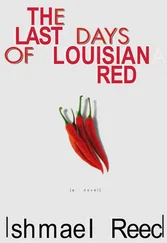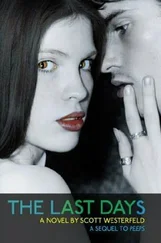Iché modeled at various times for several artists, including her father, the sculptor René Iché, a resistance activist with the Groupe du musée de l’Homme. In 1940, she was the model for his bronze La Déchirée—The Torn —a statuette of a semi-naked, blind woman reaching for the sky. This histrionic allegory for France under Nazi occupation was smuggled to London, where it was given to de Gaulle. He kept it on his desk, and it became something of a symbol of the Resistance. In our reality, the statue later disappeared (Thibaut had never heard of it, so its fate in his world I don’t know). This was not a great loss to art.
Sacré-Cœur:It was Breton who suggested, as one of his “irrational embellishments,” that Sacré-Cœur should become a tram depot, painted black. He also claimed it should be transported to the northern region of France, the Beauce. This, obviously, did not occur.
a ladder of sinewy muscled arms:The ladders of thick arms gripping each other, emerging from the earth and supporting each other at each elbow, leaning against walls, are manifs from an ink drawing by Tita, Les Bâtisseurs de ruines, printed in Transfusion du verbe in 1941. Other aspects of the landscape of New Paris, as Thibaut described them to me, also seem derived from illustrations from that journal—stones like praying mantis claws, a windowed hand growing from the ground, manifs from Aline Gagnaire’s illustration in the same issue, for example.
A huge featureless manif woman holed by drawers … dolls crawling crablike:The drawered, headless woman Thibaut imagines Sam considering is from Dalí’s 1937 painting The Burning Giraffe. That famous giraffe has also, he told me, more than once galloped through New Paris, pouring out smoke, but the huge propped-up women, extruding drawers from their legs and chests, leaves shedding in drifts from the tree-boughs where should have been their heads, are the more dangerous and threatening manifs. Their drawers slide open and shut hungrily.
The dolls mentioned are manifs of Hans Bellmer’s notorious and grotesque sculptures of young women’s body-parts reconfigured into lubricious and frightening formations.
“‘My pajamas balsam hammer gilt with azure.’”:Simone Yoyotte, from whose poem Thibaut’s pajamas were a manif, was from Martinique. She was a collaborator of the Parisian Surrealist Group before her death in 1933, at the age of twenty-three. More important, she, along with her brother Pierre, was an activist in the Légitime Défense (Self-Defense) group. It was in their journal, of the same name, that this poem was published, in 1932. The group was formed on Rue Tournon in 1932 by the Martinican poets and philosophers Etienne Léro, Jules Monnerat, René Ménil, and five others, including the Yoyottes. None were above the age of twenty-five. The extraordinary, explosive journal, with its uncompromising anticolonial, Marxist and Surrealist interventions, was later to be described by Léon-Gontran Damas, one of the so-called “fathers” of Négritude, as “the most insurrectional document ever signed by people of color.”
Trapped in their Marseille hinterland … the Surrealists had drawn new suits, a cartographic rebellion:The origin story of the “Marseille game,” the deck of cards that the captive Surrealists created and described to Parsons, is the same in our timeline as in Thibaut’s. The full details of the cards and the artists who depicted them were as follows:
BLACK STARS, FOR DREAMS:
Ace; Oscar Dominguez
Genius—Lautréamont, the author of the Surrealist favorite The Songs of Maldoror; Wilfredo Lam
Siren—Lewis Carroll’s Alice; Wilfredo Lam
Magus—Freud; Oscar Dominguez
RED FLAMES, FOR LOVE AND DESIRE:
Ace; Max Ernst
Genius—Baudelaire; Jacqueline Lamba
Siren—the Portuguese Nun, the supposed author of a set of passionate love letters of the seventeenth century (now thought to be fictional); André Masson
Magus—the poet and philosopher Novalis; André Masson
BLACK LOCKS, FOR KNOWLEDGE:
Ace; André Breton
Genius—Hegel; Victor Brauner
Siren—Hélène Smith, the nineteenth-century French psychic; Victor Brauner
Magus—Paracelsus; André Breton
RED WHEELS, FOR REVOLUTION:
Ace; Jacqueline Lamba
Genius—the Marquis de Sade; Jacques Hérold
Siren—Lamiel (the heroine of the novel of the same name, by Stendhal); Jacques Hérold
Magus—Pancho Villa; Max Ernst
The jokers were images of Père Ubu, the monstrous swearing clown-tyrant of the plays of that beloved Surrealist precursor Alfred Jarry. The image chosen was by Jarry himself.
In our timeline, the designs were published in the Surrealist journal VVV in 1943, in New York, some reworked a little. Mostly this was just a matter of tidying up the images, but there were more substantial changes. The Ace of Revolutions, for example, became a wheel seemingly balanced on a spatter-pattern of blood, rather than, as in Lamba’s original design, a waterwheel churning blood. The radical-melancholy and foreboding sense of blood as a motor for change was thus, uncharacteristically for the movement, bowdlerized away.
In the reality of New Paris, the cards were never published, though they did, obviously, appear within the city, in card form no less, as immensely powerful manif items, capable of invoking their geniuses, their sirens and magi. Thibaut claimed to me that it is not just the face cards but the aces and number cards that were present in Paris. What they manifest, and how, he did not know.
“A lobster. With wires…”:It would be surprising if Salvador Dalí’s absurdly iconic Lobster Telephone of 1936 did not appear in Thibaut’s reconfigured world.
scratch-figures etched with keys:In the 1930s, Brassaï famously photographed the images scrawled on and scratched crudely into Paris walls. In New Paris, the faces (as they mostly were) he obsessively captured in black and white are live, and full of motion. If, Thibaut said, you put your ears close to the walls, they move their scratch mouths, and whisper to you in a cementy language no human understands.
a great shark mouth … smiling like a stupid angel:This manif is from a text by Alice Rahon, from 1942, in which she describes, at the horizon of the city, “a great shark mouth appear[ing] with the smile of a stupid angel.”
It is a sandbumptious:The sandbumptious is a freakish beast manifest from the work March 7 1937—4 (Sandbumptious) by the extraordinary Grace Pailthorpe. Pailthorpe, now an obscure figure, was described in 1936 by Breton as “the best and most truly Surrealist” of the British Surrealists (which could be read, admittedly, as damning with faint praise). She had been a surgeon in France during the First World War, and went on to be a pioneer in British psychoanalysis. Born in 1883, she turned to painting late, at the age of fifty-two, when she met the artist Reuben Mednikoff, who was to become her partner (in another overlap between the worlds of the occult and Surrealism they met at a party hosted by Victor Neuberg, a Satanist and one of Crowley’s lovers). Pailthorpe and Mednikoff were expelled from the London Surrealist Group in 1940 in a bout of toxic infighting (Conroy Maddox called Pailthorpe an “Ogre”) but the spirit of her work clearly remained allied enough in spirit to be made manifest in New Paris after the S-Blast.
the Lion of Belfort:The Lion of Belfort is one of the Parisian sites irrationally embellished in 1933, but none of the suggestions from the article exactly concord with Thibaut’s description here. The stone figures through which Thibaut walked seem, rather, perhaps to be refugees from the “Lion of Belfort” section of Max Ernst’s collage novel Une semaine de bonté.
Читать дальше












